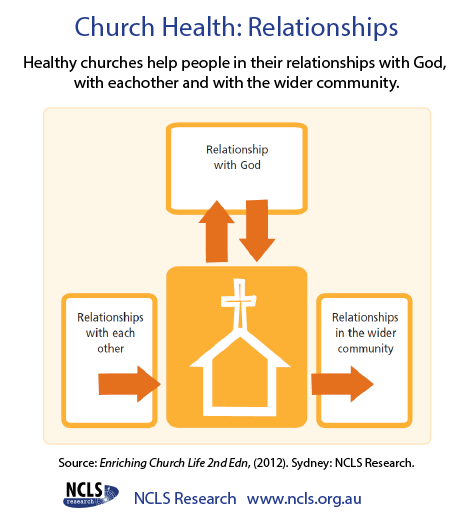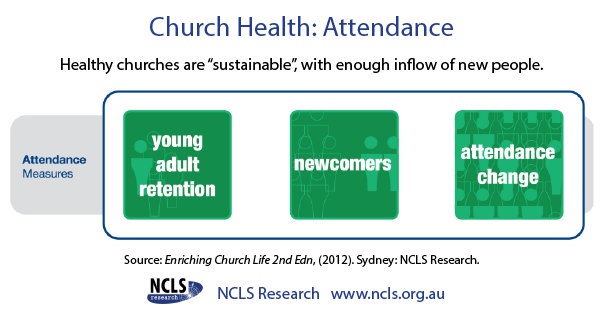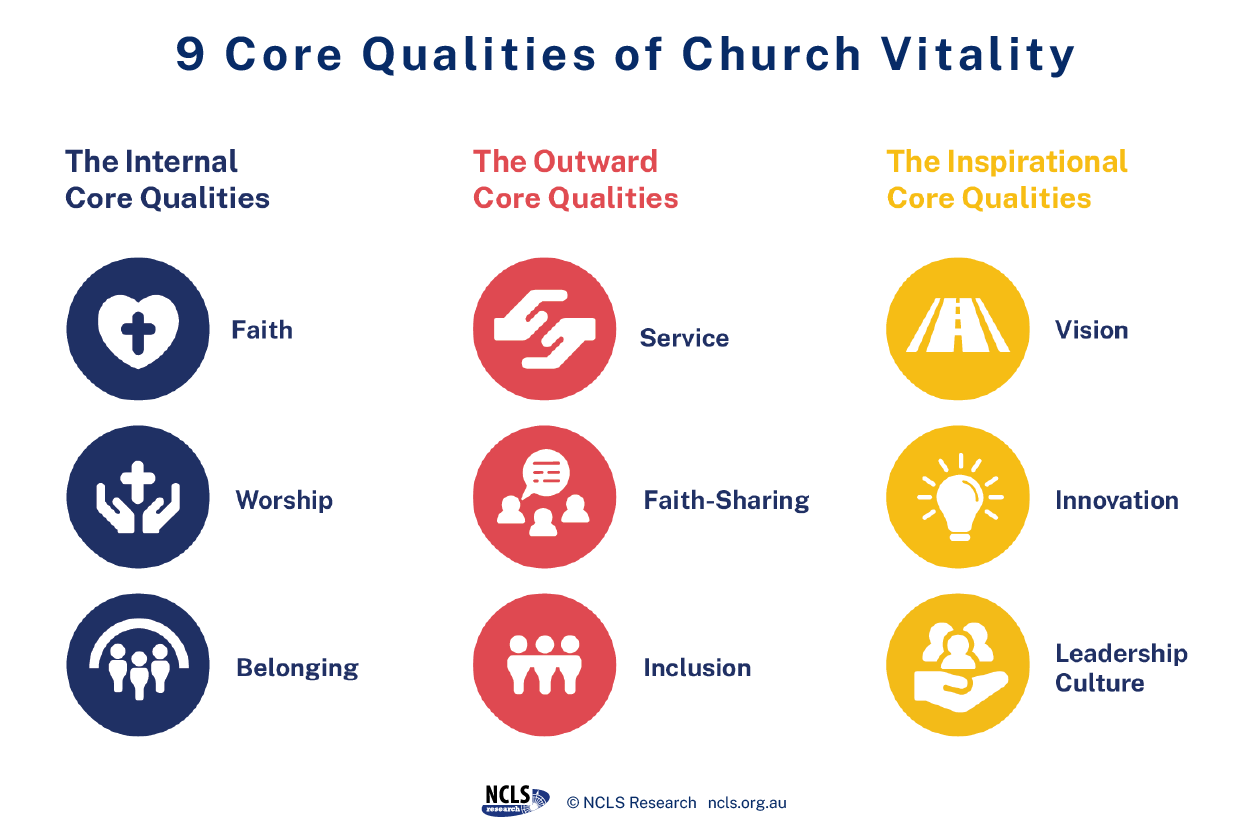Defining Church Vitality
What makes a healthy church? Over 30 years, NCLS Research has studied church health and vitality within changing times. We encourage churches to help churchgoers to strengthen their relationships with God, with each other and with the wider community.

Is a healthy church identified by its characteristics? Do we know a church is healthy when we see it doing particular practices? Who decides if a church is healthy, and why? What parameters have been applied when a label is slapped on a healthy church?
Church vitality has general parallels with other not-for-profits in their organisational effectiveness. Some commentators look to see if a church is healthy by whether or not it is growing numerically. This is a simple quantitative measure. It’s straight forward and reflects the Matthew 28: 18-20 passage “go, therefore, and make disciples of all nations”. Conversely, the other main measure of church vitality considers various qualitative elements. This picks up perspectives from multiple stakeholders – the long-term member, the visitor, the newcomer.
At NCLS Research, we have a fairly solid and consistent list that we recognise in reading church vitality literature. Aspects found in a review of literature are: community, outward focus, leadership, spirituality, worship, discipleship, prayer, vision, caring for the young, giving, open and flexible innovation, healing, diversity, beauty and attendance (numerical growth, young adult retention and newcomers).
The NCLS Research model is goal-focused. It investigates what a church ought to achieve.
Church health in relationships
Our 30-year model has found that healthy churches help people in their relationships: with God, by strengthening religious beliefs and practices in faith matters; with each other, so that people feel they belong; and with the wider community, making an impact through word or deed in the society around them.
If a church is doing that, a church is doing what it is supposed to do.

Relationship with God
The first and greatest command is to love God with all of our strength (Matthew 22:37). Church attenders seek to worship God and to be transformed through their relationship with God. Without this transformation or spiritual growth we are only “playing liturgical games or having charismatic caresses” (CEMPAC, 2004, 99). This dynamic aspect of the Christian faith is reflected in the faith and worship Core Qualities.
Relationships with each other
Faith in God also involves joining with others who are on the same journey of faith. The writer of the first letter of John sums this up by saying that “if we walk in the light…we have fellowship with one another” (1 John 1:5–7). Relationships between those in the light are to be characterised by love that is both truthful and practical (1 John 3:11–18). Relationships within the church, the degree of belonging that attenders feel, and frequency of attendance at church are covered by the belonging Core Quality.
The need for effective church leadership reflects a biblical pattern as well as a broader sociological reality. Leadership can provide both stability in a church and be a catalyst for change. How the leadership and their endeavours are viewed by church attenders is covered in the leadership culture, vision and innovation Core Qualities.
Relationships in the wider community
While the first command for the Christian is to love God, the second command is to love one’s neighbour as oneself (Matthew 22:34–40). Our concern for our neighbour can include their physical and social needs (Matthew 25:31–46), the call to salvation and discipleship (Matthew 28:19,20) and justice and mercy (Matthew 5:6,7). We are to play our part in making present the kingdom of God. Practical ways in which church attenders do this are measured in the service, faith sharing and inclusion Core Qualities.
The flow of newcomers is an important measure of how well a local church is connecting with the wider community. These are not people who have come from another local church but are fresh to church. Their presence is often the fruit of the outreach efforts of the church and its attenders.
The issue of growth and decline in attendance is one that continues to be high on the agenda of many local churches. For some the need to engage this issue has to do with future survival. For others it is about pursuing the most effective approaches for outreach, so that they can connect more effectively with the wider community.
The question can be asked whether growing churches also have higher levels of vitality. In short, the answer to the question is yes, there is a relationship between many aspects of church vitality and growth and decline in church attendance.
Church health through sustaining attendance
Healthy churches are also “sustainable” in terms of their attendance with an inflow of new people.
Inflow is measured by young adult retention (teenagers and youth growing into adult attenders), newcomers, and attendance change.
One of our UK colleagues says that a reason for church decline is the failure to replace older generation attenders, and that it’s easier to retain young churchgoers, than it is to attract people who are unchurched. In other words, we need to look at hanging on to our own children because there is a generational erosion taking place.

Church health in leadership and direction
Healthy churches also have vital leadership and directions for the future.
This is about the capacity or readiness for action within a church. Such actions are: empowering leadership that includes others, clear and owned vision, goals or direction for the church, a readiness to innovate and try new things, and confidence in the church.
Church health in nine core qualities of church life
The NCLS Research Core Qualities Model: The Core Qualities model was developed from the 1991 National Church Life Survey (Kaldor et al, 1992) onwards and involve more then 20 denominations. The responses were based on the perspectives of people in the pews.
There have been various configurations but the same core concepts have remained. This is primarily large-scale quantitative research, with both strengths and limitations.

The model of nine core qualities and three attendance measures form the basis of the model used by NCLS Research for evaluating church vitality via a Church Life Survey. More information



